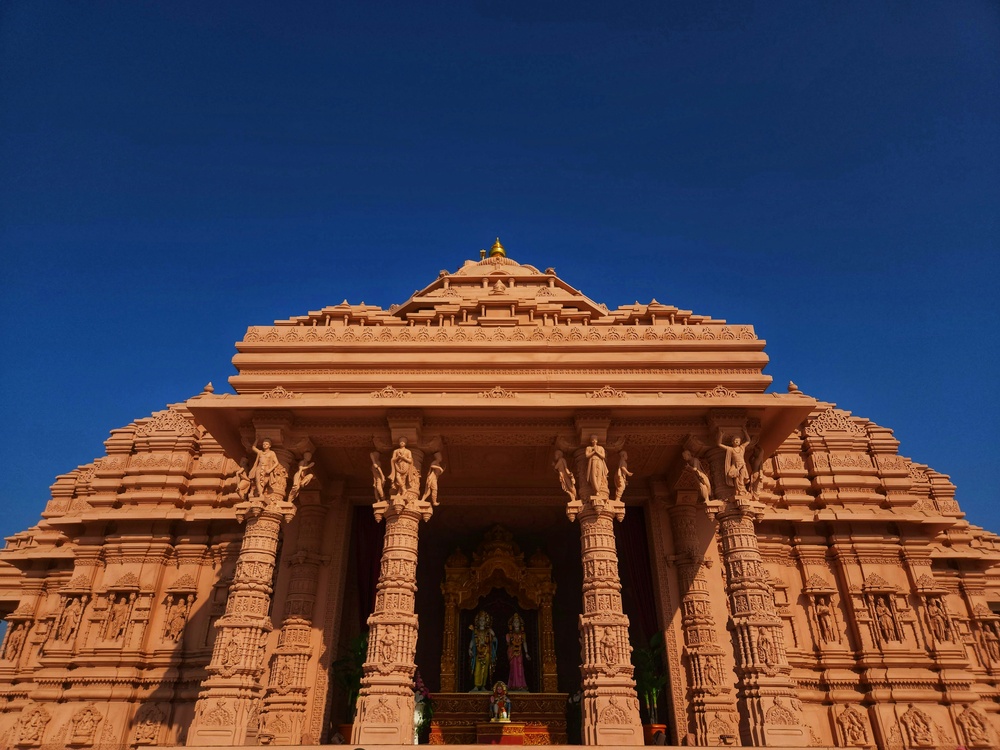Ayodhya Visiting Places: A Spiritual Guide to the Birthplace of Lord Rama
Ayodhya, a city steeped in rich mythology and profound spirituality, is revered as the birthplace of Lord Rama, the seventh avatar of Lord Vishnu. This ancient city in Uttar Pradesh holds a sacred place in the hearts of millions of devotees and travelers seeking a spiritual journey. If you are planning to visit Ayodhya, knowing the key Ayodhya visiting places will enrich your pilgrimage, allowing you to experience the city’s divine legacy fully.
This spiritual guide highlights the most significant Ayodhya visiting places, helping you navigate through the holy sites and soak in the divine essence of Lord Rama’s birthplace.
The Spiritual Heart of Ayodhya: Ram Janmabhoomi
No spiritual tour of Ayodhya is complete without visiting the Ram Janmabhoomi. This is the legendary site where Lord Rama was born, making it the epicenter of devotion in the city. The temple complex here is not only a symbol of faith but also a testament to the city’s historical and cultural importance. Pilgrims gather to offer prayers and witness the spiritual energy surrounding this sacred spot.
Hanuman Garhi: The Fortress of Devotion
Another prominent site among Ayodhya visiting places is Hanuman Garhi, a temple dedicated to Lord Hanuman, the devoted follower of Lord Rama. Situated atop a hill, this temple resembles a fortress and offers spectacular views of the city. The temple is famous for its early morning and evening aartis that attract thousands of devotees daily. Its spiritual ambiance makes it an essential destination for those visiting Ayodhya.
Kanak Bhawan: The Golden Temple of Lord Rama and Sita
Kanak Bhawan stands as a symbol of divine love between Lord Rama and his consort, Sita. Known for its beautifully gold-plated doors and exquisite architecture, this temple holds great religious importance. Devotees visit Kanak Bhawan to seek blessings from the idols of Rama and Sita, believed to be gifted by Kaikeyi, Lord Rama’s stepmother. The temple’s serene environment provides a perfect place for meditation and prayer.
The Holy Saryu River: A Natural and Spiritual Wonder
The Saryu River is inseparable from the spiritual fabric of Ayodhya. Bathing in its holy waters is believed to cleanse sins and purify the soul. The riverbanks are lined with ghats where pilgrims perform rituals and ceremonies, making it a vital part of the city’s spiritual life. A boat ride on the Saryu is a peaceful experience that offers a unique perspective of Ayodhya’s sacred landscape.
Treta Ke Thakur: Where Rituals Meet History
Treta Ke Thakur is one of the oldest temples in Ayodhya, believed to mark the place where Lord Rama performed the Ashwamedha Yagna. This temple is an important stop among Ayodhya visiting places for those interested in the religious rituals associated with the Ramayana. The antique idols and the tranquil setting add to the temple’s spiritual charm.
Nageshwarnath Temple: The Lord Shiva Connection
While Ayodhya is primarily known for Lord Rama, the Nageshwarnath Temple dedicated to Lord Shiva also holds great significance. According to legend, this temple was constructed by Kush, Lord Rama’s son. It offers devotees a chance to worship Lord Shiva and reflect on the interconnectedness of Hindu mythology and worship practices.
Guptar Ghat: A Historic Riverside Retreat
Guptar Ghat is a serene spot on the banks of the Saryu River, steeped in mythology. It is believed to be the place where Lord Rama’s sons, Lava and Kusha, crossed the river. Pilgrims come here to take a holy dip and perform religious ceremonies. The peaceful atmosphere makes Guptar Ghat a perfect place for spiritual contemplation.
Ram Katha Park: A Modern Tribute to the Epic
Ram Katha Park is a beautifully designed space dedicated to narrating the story of Lord Rama through sculptures, murals, and artistic installations. This park offers visitors a chance to experience the Ramayana visually, making it ideal for families and those wanting a comprehensive understanding of the epic’s cultural impact.
Bharat Kund: Honoring Lord Rama’s Devoted Brother
Bharat Kund commemorates the devotion of Bharat, Lord Rama’s brother, who is said to have stayed here during Rama’s exile. This sacred pond surrounded by temples offers a calm environment for prayers and reflection. Bharat Kund remains one of the key Ayodhya visiting places for devotees who admire the loyalty and love shown by Bharat in the Ramayana.
Treta Sthal: The Battlefield of Legends
Treta Sthal is believed to be the site where Lord Rama defeated the demon king Ravana, marking a turning point in the Ramayana. This archaeological site features ancient temples and ruins, providing both a historical and spiritual experience. Visitors interested in the epic’s legends and history should include Treta Sthal in their itinerary.
Planning Your Pilgrimage to Ayodhya
Exploring these top Ayodhya visiting places will immerse you in the spiritual heritage and cultural depth of Lord Rama’s birthplace. Each site offers a unique aspect of the city’s religious tapestry, from the ancient temples to the serene river ghats.
Tips for Visitors:
- Visit the temples during early morning or late evening to avoid large crowds and experience the tranquility of the sacred spaces.
- Respect local customs and traditions while participating in rituals and ceremonies.
- Consider hiring a knowledgeable guide to gain deeper insights into the history and mythology of each site.
Ayodhya is not just a destination; it is a spiritual journey that connects you with the timeless tales and divine energies of Indian heritage. Whether you are a devout pilgrim or a curious traveler, these Ayodhya visiting places promise a transformative experience filled with faith, history, and culture.

